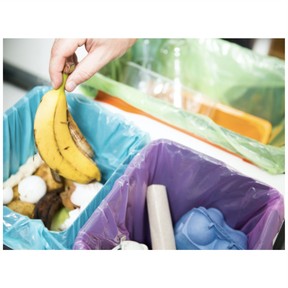



8,000 schools use Gynzy
92,000 teachers use Gynzy
1,600,000 students use Gynzy
General
Students learn how to compost and how composting affects the Earth. They will identify which items can and cannot be composted and explore the benefits of composting.
Standards
NGSS:
5-ESS3-1
Learning Objective
Students will be able to explain composting and describe the effects.
Introduction
Discuss what students normally do with their leftover food. Introduce the idea of composting and watch the video. Go through the discussion questions and discuss some of the information they learned.
Instruction
Show students a list of some items that can and cannot be composted. Then share some reasons to compost. These include growing healthier plants, saving money, reducing waste, and convenience. Ask students what they think is the most important reason listed. Next, discuss some of the impacts of composting, like less pollution, enhanced soil, and more jobs. After this, watch another video. The video goes into more detail about composting, so discuss this new information. Have students drag the compostable items onto the bin, then identify whether a statement describes a reason, an impact, or an example of composting. Click on the covers to reveal the answers.
Quiz
Students respond to ten multiple-choice and true or false questions.
Closing
Review what was learned. Then students drag the items into the correct box, either “compostable” or “not compostable.”
The online teaching platform for interactive whiteboards and displays in schools
Save time building lessons
Manage the classroom more efficiently
Increase student engagement
Discover more!
About Gynzy
Gynzy is an online teaching platform for interactive whiteboards and displays in schools.
With a focus on elementary education, Gynzy’s Whiteboard, digital tools, and activities make it easy for teachers to save time building lessons, increase student engagement, and make classroom management more efficient.



